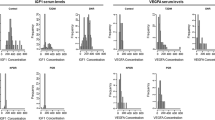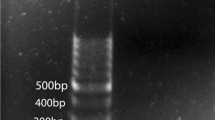Abstract
Evidence exists that some clinical, metabolic and genetic risk factors are associated with the development of diabetic retinopathy (DR). The aim of the study was: (1) to define the prevalence of DR in the examined group of 267 patients with type 2 diabetes mellitus (T2DM) from a Polish population; (2) to identify in crosssectional analysis, the clinical features associated with DR in the study group; and (3) to search for the association of 4 markers of vitamin D receptor (VDR), a candidate gene for vascular complications in diabetes, with DR. The examined group consisted of 146 female and 121 male T2DM patients (mean age at examination: 61.3±9.4 years; age at T2DM diagnosis: 50.0±9.2; T2DM duration: 11.3±7.8 years; body mass index (BMI): 30.5±5.5 kg/m2; HbA1c: 7.8±1.5%). In all patients, the clinical and metabolic profile was determined. Diagnosis of DR was determined by a trained ophthalmologist by ophthalmoscopy after pupillary dilatation. Colour photographic documentation was made. The examined T2DM patients were genotyped for FokI, ApaI, BsmI and TaqI frequent VDR polymorphisms based on the restriction fragment length polymorphism method. The statistical analysis was performed using univariate and multivariate logistic regression (SAS) and haplotype analysis (Haplostat). DR was detected in 85 (31.8%) patients with T2DM. The multivariate analysis revealed that significant predictors of this complication were: never-smoking status (odds ratio 2.2, 95% confidence interval 1.2–4), urea serum level (1.3, 1.1–1.5), HbA1c level (1.4, 1.1–1.8) and insulin treatment (2.7, 1.4–5.1). Other features such as age of T2DM diagnosis, T2DM duration prior to ophthalmic exam, obesity (BMI>30), serum creatinine level, albumin/creatinine ratio and arterial hypertension were univariate predictors of DR, however they lost significance as independent predictors in multivariate analysis. Similarly, the alleles, genotypes, haplotype and haplotype combination of VDR were not associated with the examined complication. However, there was a suggestion of a possible slight association between the fbaT haplotype and DR (p=0.11). In conclusion, our study showed that DR in T2DM patients remains a frequent complication in Polish T2DM patients. We were able to confirm the role of some clinical risk factors, surprisingly including not-smoking status, as was previously shown in the UK Prospective Diabetes Study (UKPDS). VDR gene polymorphisms did not constitute a risk factor for this size of study group.
Similar content being viewed by others
Author information
Authors and Affiliations
Rights and permissions
About this article
Cite this article
Cyganek, K., Mirkiewicz-Sieradzka, B., Malecki, M.T. et al. Clinical risk factors and the role of VDR gene polymorphisms in diabetic retinopathy in Polish type 2 diabetes patients. Acta Diabetol 43, 114–119 (2006). https://doi.org/10.1007/s00592-006-0225-3
Received:
Accepted:
Issue Date:
DOI: https://doi.org/10.1007/s00592-006-0225-3




